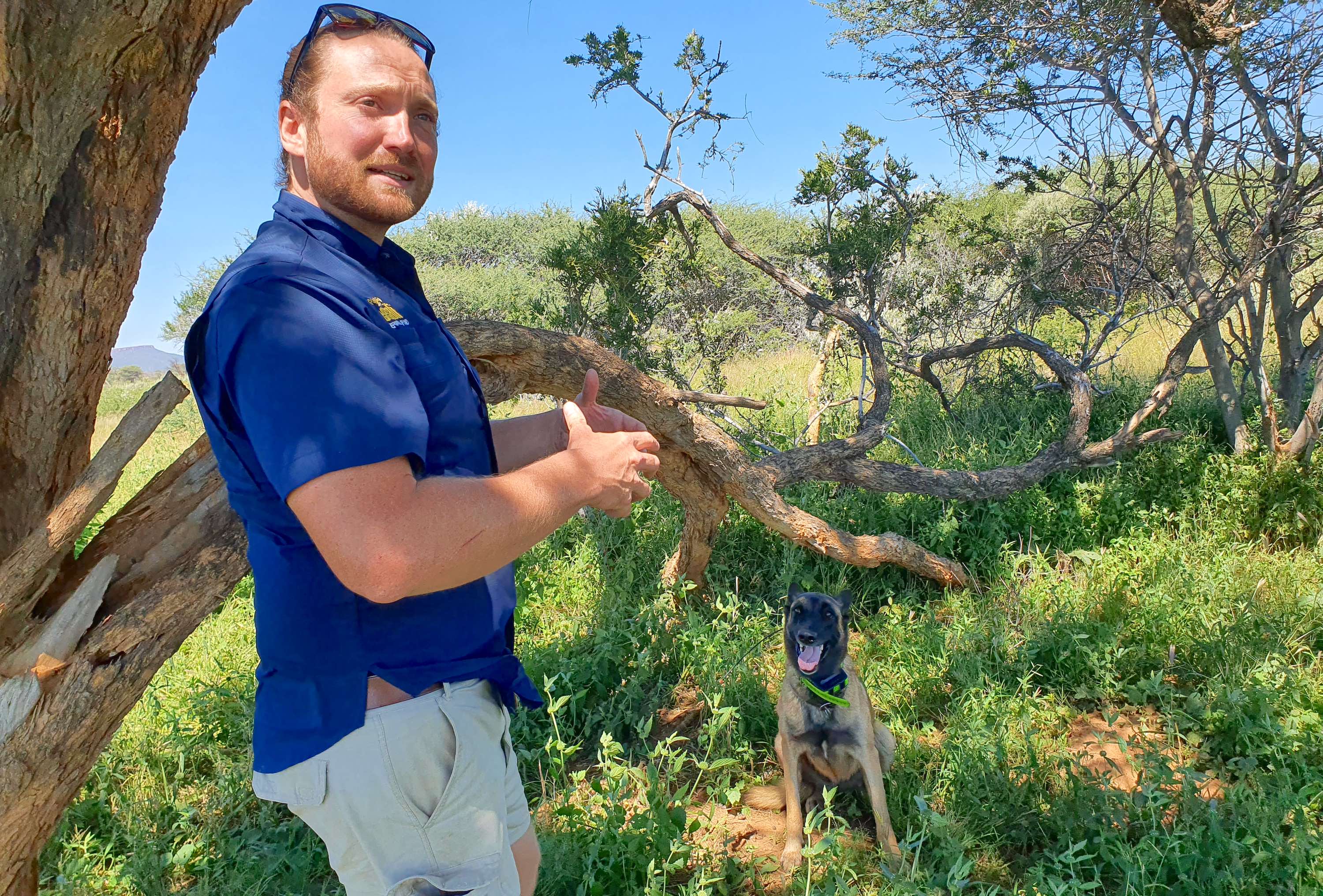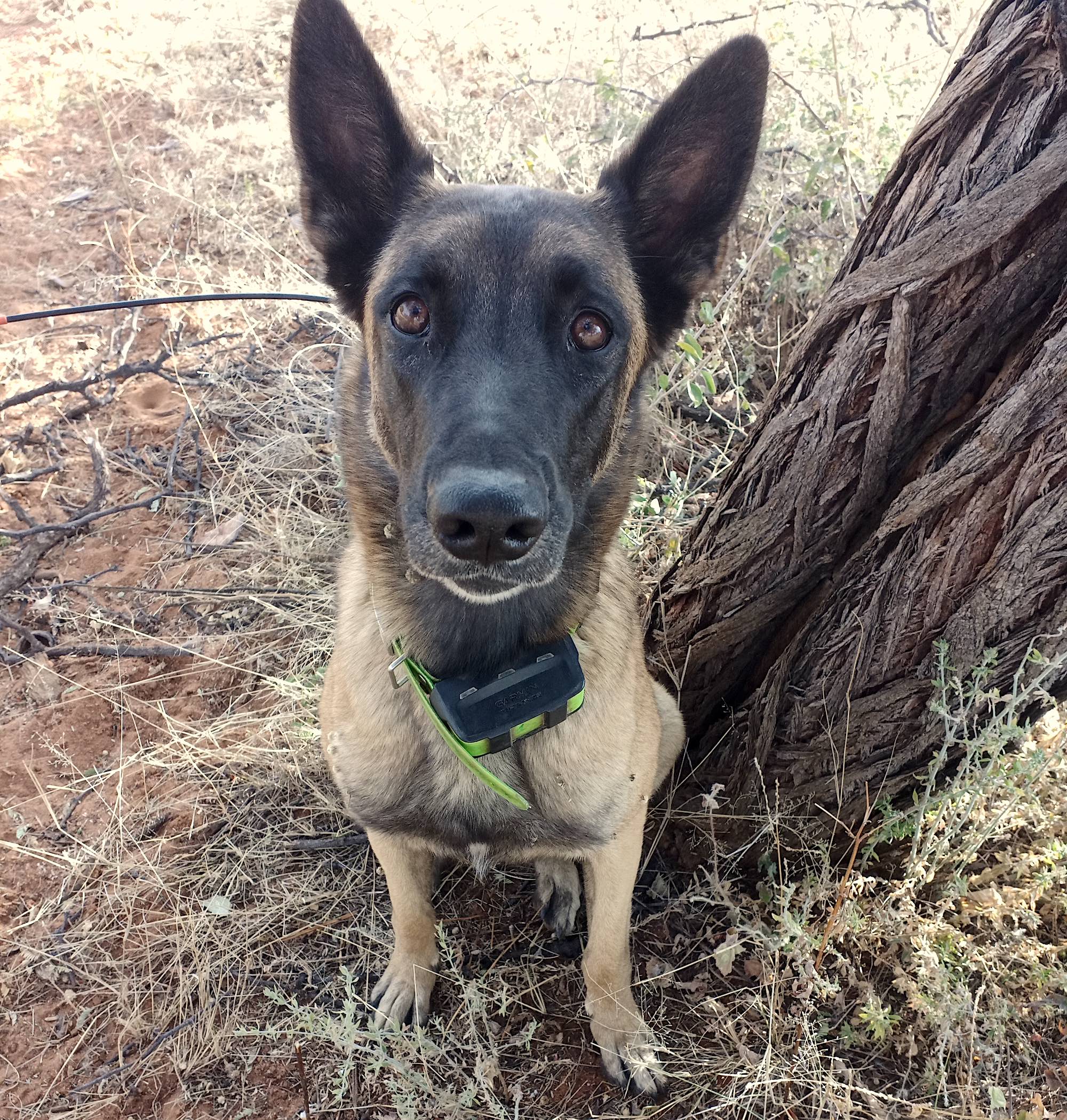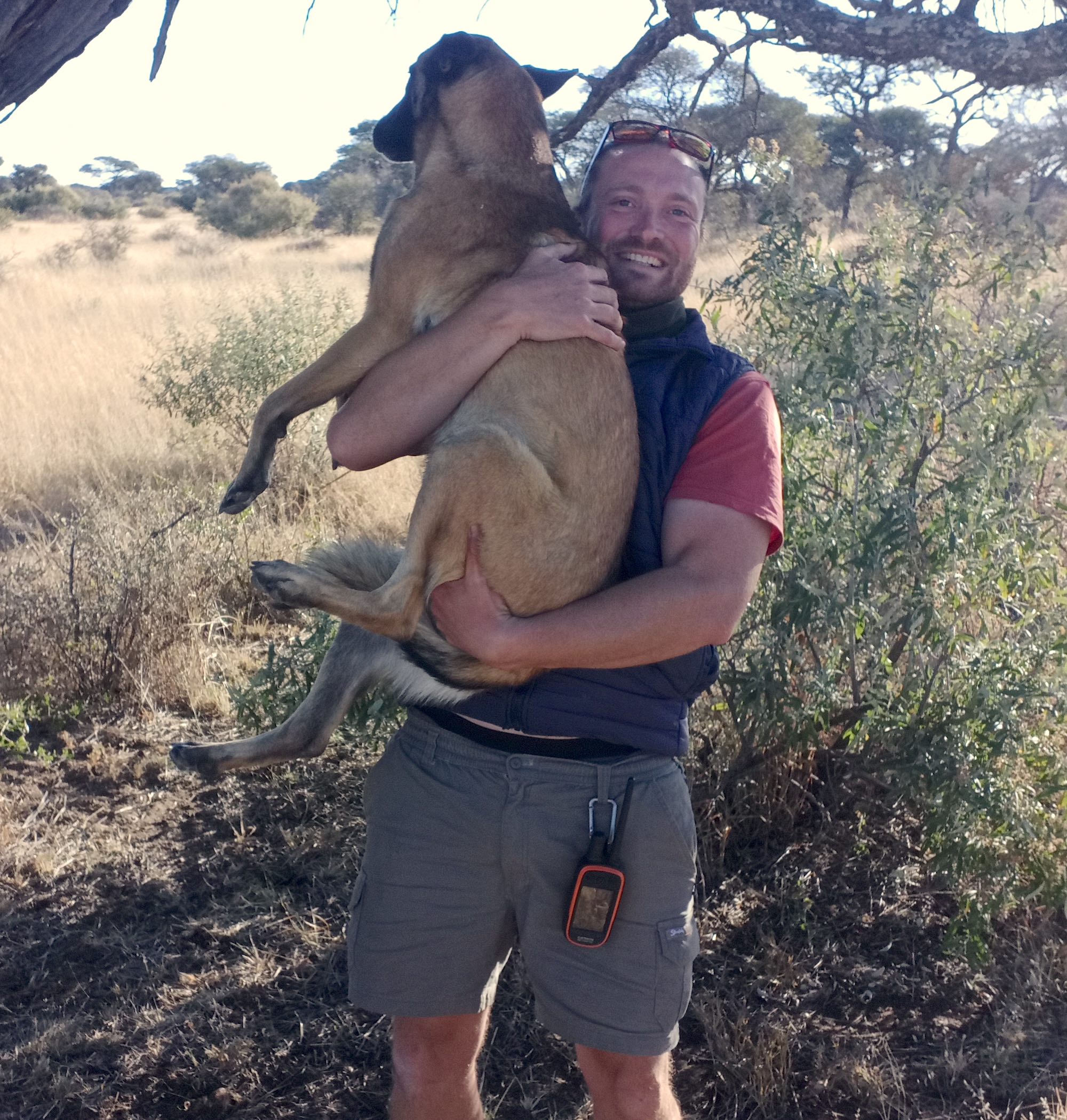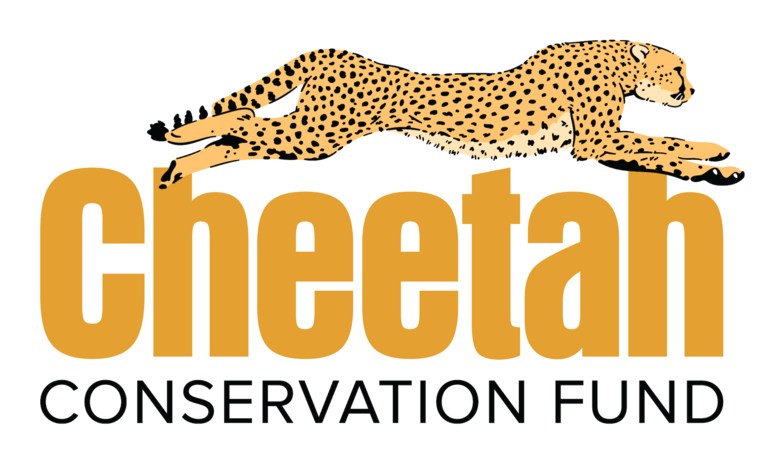
Dogs help CCF geneticists study cheetahs without invading their space
9th September 2021
Dogs have helped humans in numerous different ways for thousands of years – from guarding our livestock against predators and providing companionship to rescuing people from danger and fighting crime – there is little that our canine friends cannot do. But did you know that they also help us to conserve endangered species? This relatively new role for dogs relies on their detection abilities. But instead of looking for bombs, suspects or drugs, we train them to look for carnivore poop – known to researchers as scat. You heard that right: dogs sniffing for scat can help carnivore conservation! Sounds strange? Let us explain.
Our scientists at the Cheetah Conservation Fund (CCF) are engaged in the research and development of non-invasive census techniques, so that better conservation decisions can be made without handling any of our research animals. Non-invasive techniques can be used to gather important biomedical data that is otherwise only gained through live capture and anaesthesia, which is more expensive, requires the presence of a veterinarian, and is stressful for the animal.
Like most other carnivore researchers worldwide, CCF deploys camera traps to determine population demography and density in a non-invasive manner. Going beyond camera traps, CCF is pioneering the use of scat detection dogs to help study cheetahs; this approach to collecting data about elusive species is gaining popularity around the world. The scat found by these dogs can provide species and gender identification, insights on reproduction and health, and it can be used to determine a predator's diet, which is vital information to evaluate human-wildlife conflict situations.
Why use Dogs?

Dogs can smell much better than we can, and they can smell things that humans cannot see. Dogs have 200 million scent receptors in their noses – over 13 times more than in the human nose. Consequently, dogs only need one particle to identify a scent, whereas humans need 180,000 particles. Under realistic field conditions a trained dog can detect a scat sample from between 10 to 20 metres away, a distance at which human searchers would almost certainly fail. These scent-detecting abilities are common among all dogs, so a specific breed is unnecessary – the main prerequisite is being highly motivated and responsive to a handler. A well-trained dog knows what scent we are after and tells the handler when it gets a whiff of the right smell on the air. Being able to smell particular scents from a distance gives the dogs several advantages over other ways of studying cheetahs.
A recent CCF study, published in the Namibian Journal of Environment by Tim Hofmann, Dr Laurie Marker and Dr Hermann Hondong, looked at the dogs' efficacy and factors that affect successful detection, like wind, vegetation structure and size of the search area. The study found that dogs can find more samples in a shorter time and are more accurate in identifying species that deposited the scat than human researchers. Compared to using camera traps and human-only search teams, using dogs to detect scat can be more expensive, but the increased number of samples and the dogs' accuracy can justify their cost.
Working in Teams


Scat detection dogs at CCF live with their handler, Tim Hofmann, or with a family on the CCF campus to be part of a social group after hours. Currently our main dog is Enyakwa (Enya). The dogs are trained like narcotics or explosive-sniffing dogs, but they are taught to look for scat of a target species in exchange for a reward. Detection dogs usually work for a toy, like a ball, and will dedicate their energy to looking for scat if they know they will get to play with their toy when they find it.
Tim and Enya typically start their day early to avoid midday heat. Around 7 a.m., after a quick health check to make sure she is ready to work, Enya is loaded into CCF's special dog vehicle and Tim drives to an area where he either knows or suspects cheetah presence. Tim first inspects the area, looking for signs of wildlife, potential threats and cheetah tracks. If the coast is clear, he will let Enya out of the vehicle and put a GPS collar on her. This collar has two purposes – to record her movement and to signal to her that it is time to work. Tim then gives the command search
, and Enya takes off on her mission to find scat. If she is successful, Enya will sit by the scat and wait for Tim. Once he sees what she has found, Tim immediately rewards her by playing an enthusiastic game of fetch with Enya's favourite ball.
Tim then takes a sample of the scat, leaving some of it behind to serve as the message the predator intended to leave. GPS coordinates are recorded along with notes including the date, estimated age of the scat and the suspected species. When the search has ended, Tim takes off the dog's collar to indicate work is done and concludes with the word finished
. The team then returns to the CCF Centre, and Tim logs the samples in the electronic database. The scat sample is then ready to be processed.
The answers are in the DNA

The key part of this process is extracting DNA from the scat. DNA material is used to confirm species, identify individuals and determine sex. CCF uses the cheetahs' scat as a part of a census technique to determine the presence of cheetahs in the area and to learn more about these individuals, their relatedness and behaviour, and population structure.
Over the past decade, CCF's Life Technologies Conservation Genetics Laboratory, under the direction of Dr Anne Schmidt-Kuentzel, has evolved into a state-of-the-art genetics laboratory, the only one of its kind located at a conservation site in Africa. CCF collaborates with scientists around the globe, producing analysis and results for research projects that focus on not only the cheetah, but many other species as well.
CCF's genetic findings have contributed to the world's general knowledge of cheetah ecology and behaviour. In 2008, Dr Marker's PhD findings established that cheetahs in Namibia do not have a strong genetic structure but are well intermixed. CCF also uses DNA to identify the origin of cheetahs poached for illegal trade in the Horn of Africa. This work will ultimately help wildlife enforcement officers identify and intercept smuggler routes.
In 2015, Dr Marker and Dr Schmidt-Kuentzel were members of a team that mapped the cheetah genome, including the reference genome of Chewbaaka, the well-known ambassador cheetah for CCF. The initial genome analyses unravelled a plethora of fascinating insights around the cheetah's past and its remarkable specialisation for speed.
Our canine colleagues thus help us gain insights into the cheetah population without disturbing the big cats as they go about their daily lives. By combining the dog's amazing detection abilities with the latest techniques in DNA analysis, we will continuously improve our understanding of the Namibian cheetah population.

For more information, contact Cheetah Conservation Fund: +264 (0)67 306 225 or visit their website: www.cheetah.org

For articles on similar topics, please click one of the following options:
If you enjoyed this page, then you might also like:



For more great articles from Conservation Namibia see below...
Conservation Namibia brought to you by:
We use cookies to monitor site usage and to help improve it. See our Privacy Policy for details. By continuing to use the site, you acknowledge acceptance of our policy.








